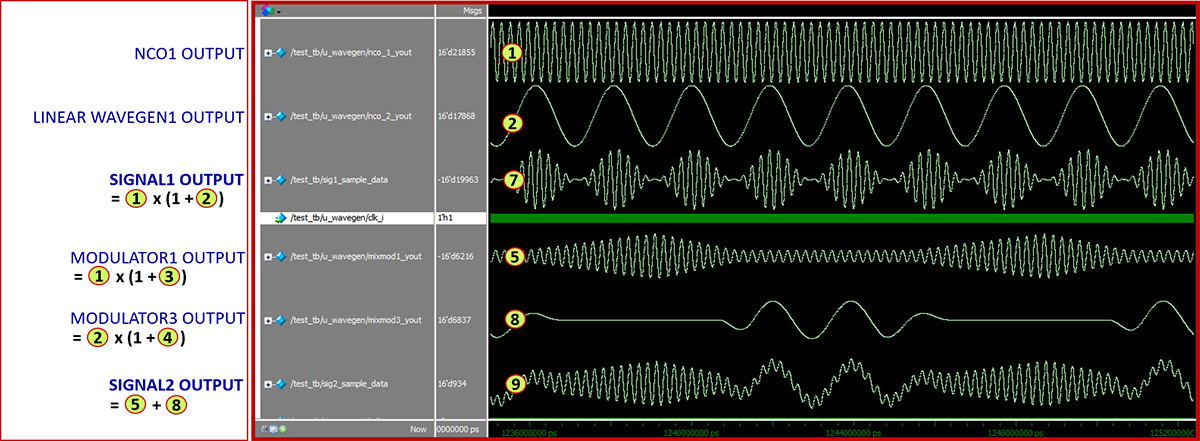Waveform Generator Overview
The highly versatile Waveform Generator LSIP allows the users to generate a wide range of composite waveforms from different combinations of four primary sources – Two LUT-based raster NCOs and two linear wave generators. By programming the MUX select registers appropriately, two different composite waves (or direct outputs of two primary sources) can be outputted at a given time, in the Industry Standard AXI4-Streaming format.
Each Linear Waveform generator provides a ‘sync_out’ signal synchronous to the rise-start and fall-start of its output wave-form, which can be used for external trigger/interrupt purposes. The Linear waveform generator also supports an external triggered mode in which, each period of the output waveform is triggered by the rising edge of an external asynchronous pulse.
The IP uses only three multipliers (for the three mixers). Each of the three mixers can be removed (bypassed) using the SParrow IP generator if needed, depending up on the performance requirements and MAC availability.
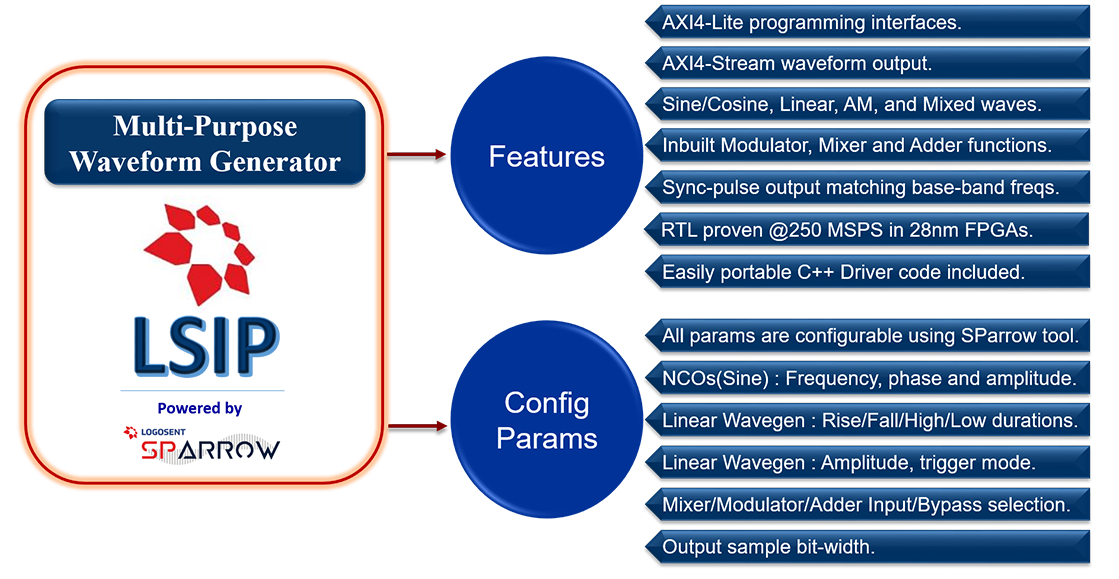
Optional external mixer/modulator is also supported in a variant of this LSIP, which allows the users to combine the output of the Waveform Generator with other external signals like Audio input. There is also a variant of the IP that supports FM modulation and chirp waveform generation for radar applications. Contact us for additional information on these variants.
The IP has been fully validated for waveform generation at 250MSPS sample-rate on XILINX Zynq7000 series 28nm AP-SOC (ARM+FPGA).
Typical applications:
- Function generator : This IP can be used to create highly versatile general-purpose function generators by deploying it in FPGA+DAC boards.
- RF generator : The IP can generate pulsed/continuous RF waveforms for plasma or radio/radar applications.
Variable Parameters of the Waveform Generator LSIP:
- Generation-time configurable (using SParrow) : Output sample width, mixer/modulator functionality selection.
- Run-time programmable (AXI4-Lite access) : NCO LUT/Frequency/Phase/Enable, Linear Wavegen parameters, various MUX selection.
Key Features and Possible output waveform combinations of the Waveform Generator LSIP:
-
- The two NCOs provided are typically used for generating mathematical accuracy Sine waves with zero phase-noise. This is achieved by loading their LUTs with up to 16,384 phase-points and then specifying a raster-pitch for the replay, in order to generate a specific output frequency. Other repetitive patterns (like a combination of harmonics) can also be loaded in the NCO LUT for generating different types of waveforms. The NCO LUT and frequency can be programmed using the AXI4-Lite interface of the IP.
-
- The Linear waveform generator is also fully programmable via. AXI4Lite MMR interface, giving the user complete flexibility to generate a variety of waveforms including Triangular waves, Saw-tooth waves, Trapezoidal waveforms with different rise/fall times, Square wave etc. The rise/fall step-size, the number of rise/fall steps, the high/low durations (for square and trapezoidal) etc. are all individually programmable at up to 32b precision. The Linear waveform generators are also capable of generating constant DC waveform, which in turn can be added to other waves.
-
- Each of the three mixer/modulator modules can be individually configured for either mixing (Y=S1*S2) or modulating (Y=S1*[1+S2]) functionality at the time of the IP generation using the SParrow tool.
-
- The Signal1 Output can provide any one of the following waveforms at a time:
- Linear Wavegen1 output
- NCO1 output
- NCO1 output mixed with or modulated by Linear Wavegen1 output
- NCO1 output mixed with or modulated by NCO2 output
- The Signal1 Output can provide any one of the following waveforms at a time:
- The Signal2 Output can provide any one of the following waveforms at a time:
- Linear Wavegen1 output OR NCO1 output OR NCO1 output mixed with or modulated by Linear Wavegen1 output
- Linear Wavegen2 output OR NCO2 output OR NCO2 output mixed with or modulated by Linear Wavegen2 output
- Sum of any one from the first set above and any one from the second set above
Waveform Generator – High Level Block Diagram
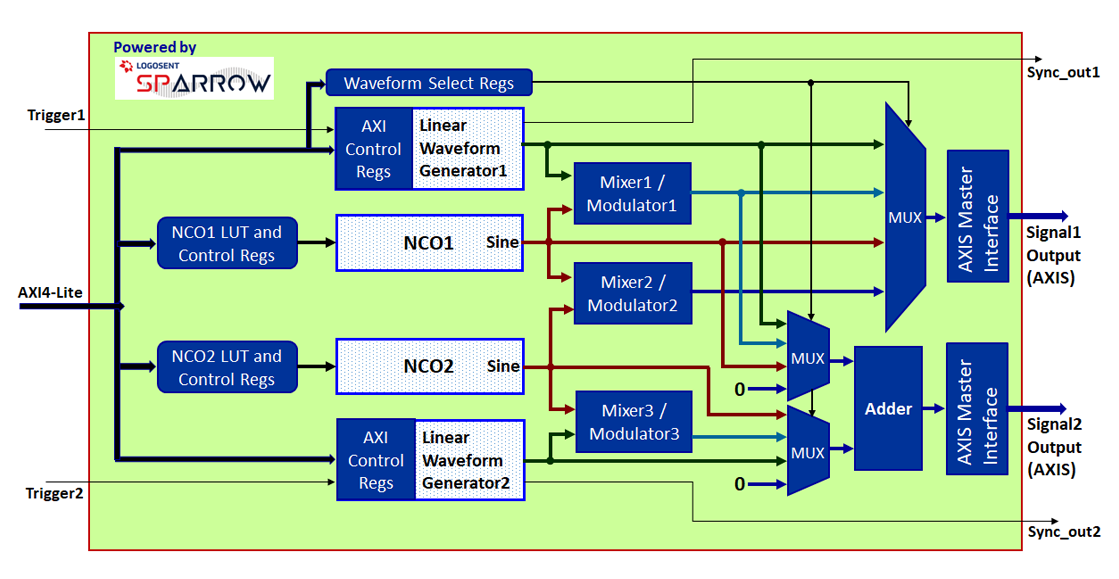
Various sample waveforms captured from RTL simulations of the Waveform Generator IP
Sample Waveform 1 : A Sine wave modulated by a periodic Trapezoidal wave.
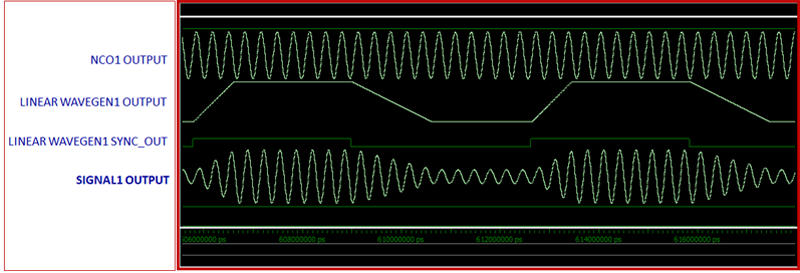
Sample Waveform 2 : Sum of two Sine waves modulated by triggered Trapezoidal pulses.
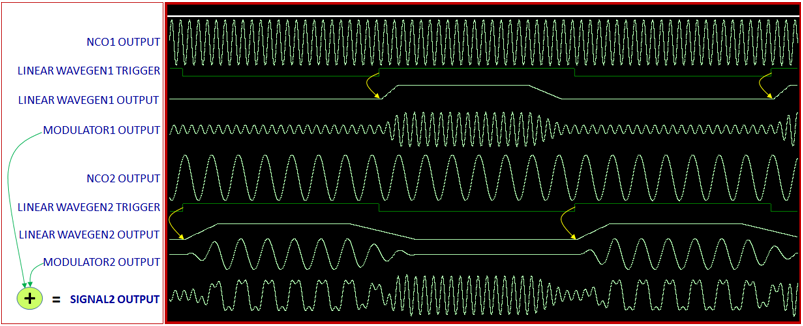
Sample Waveform 3 : Sum of a Saw-tooth wave and a Square wave.

Sample Waveform 4 : Four combinations*of Signal1 & Signal2 outputs generated by changing the output MUX controls.
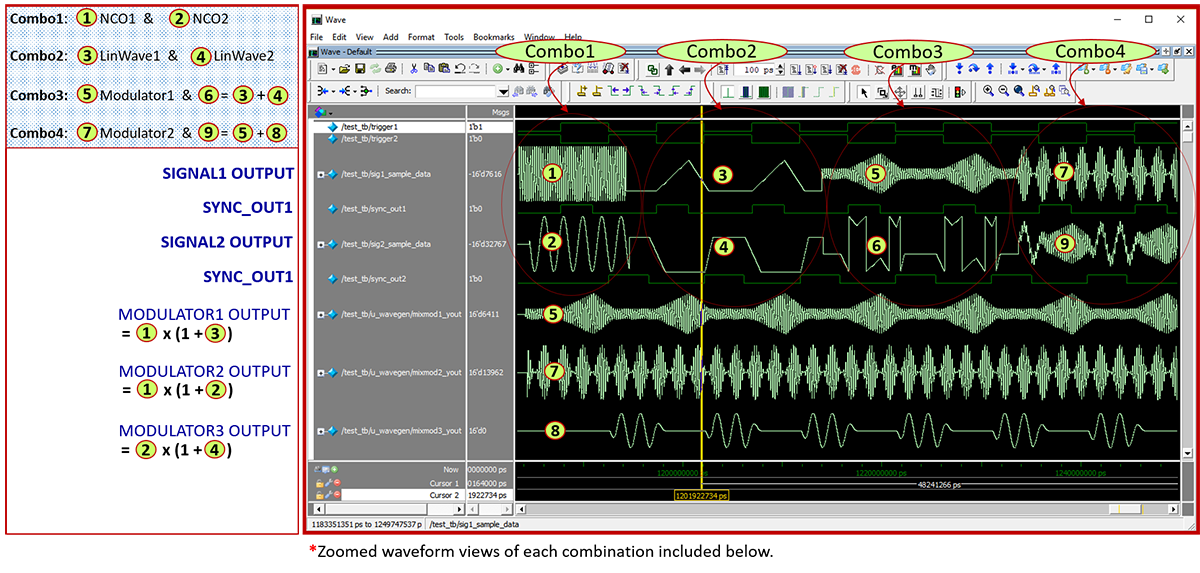
Sample Waveform 4 – Combo1 Zoom view (NCO1 output on Signal1 and NCO2 output on Signal2).

Sample Waveform 4 – Combo2 Zoom view (Linear WaveGen1 output on Signal1 and Linear WaveGen2 output on Signal2).

Sample Waveform 4 – Combo3 Zoom view (NCO1 output modulated by Linear Wave1 on Signal1 and sum of two Linear Waves on Signal2).
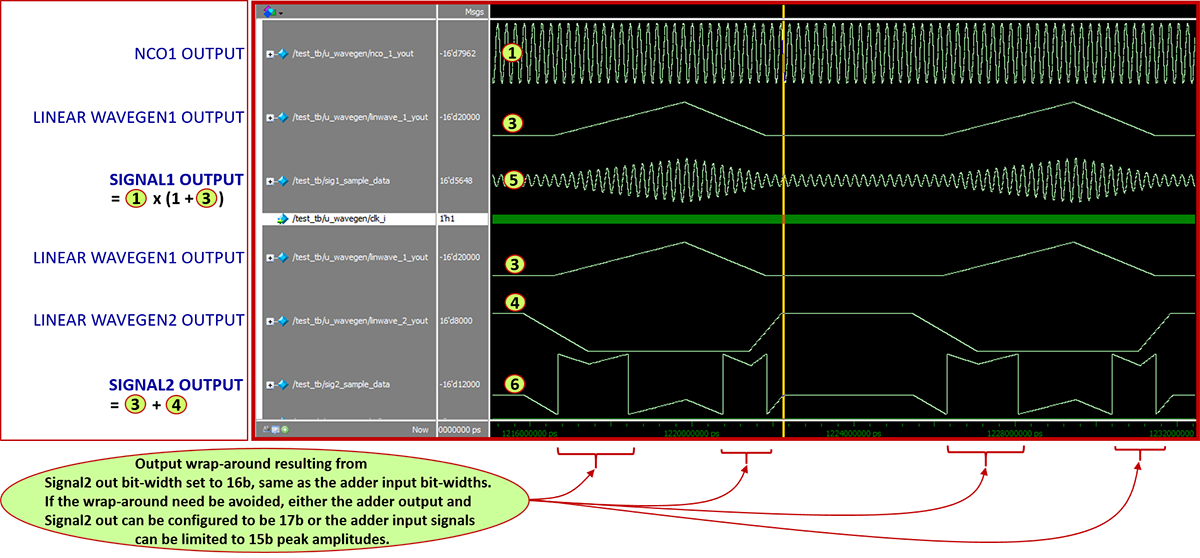
Sample Waveform 4 – Combo4 Zoom view (NCO1 output modulated by NCO2 output on Signal1 and sum of two modulated waves on Signal2).
